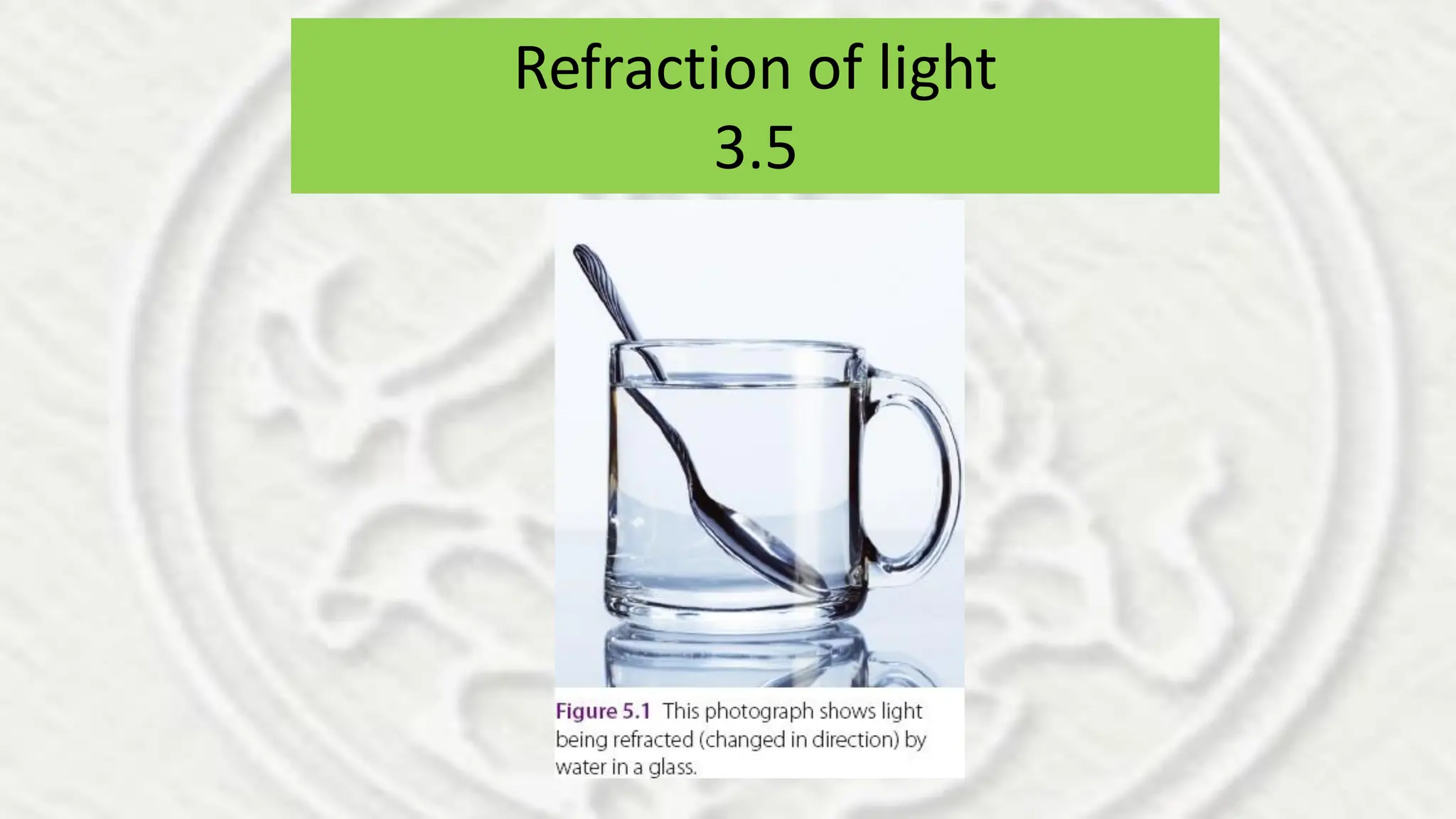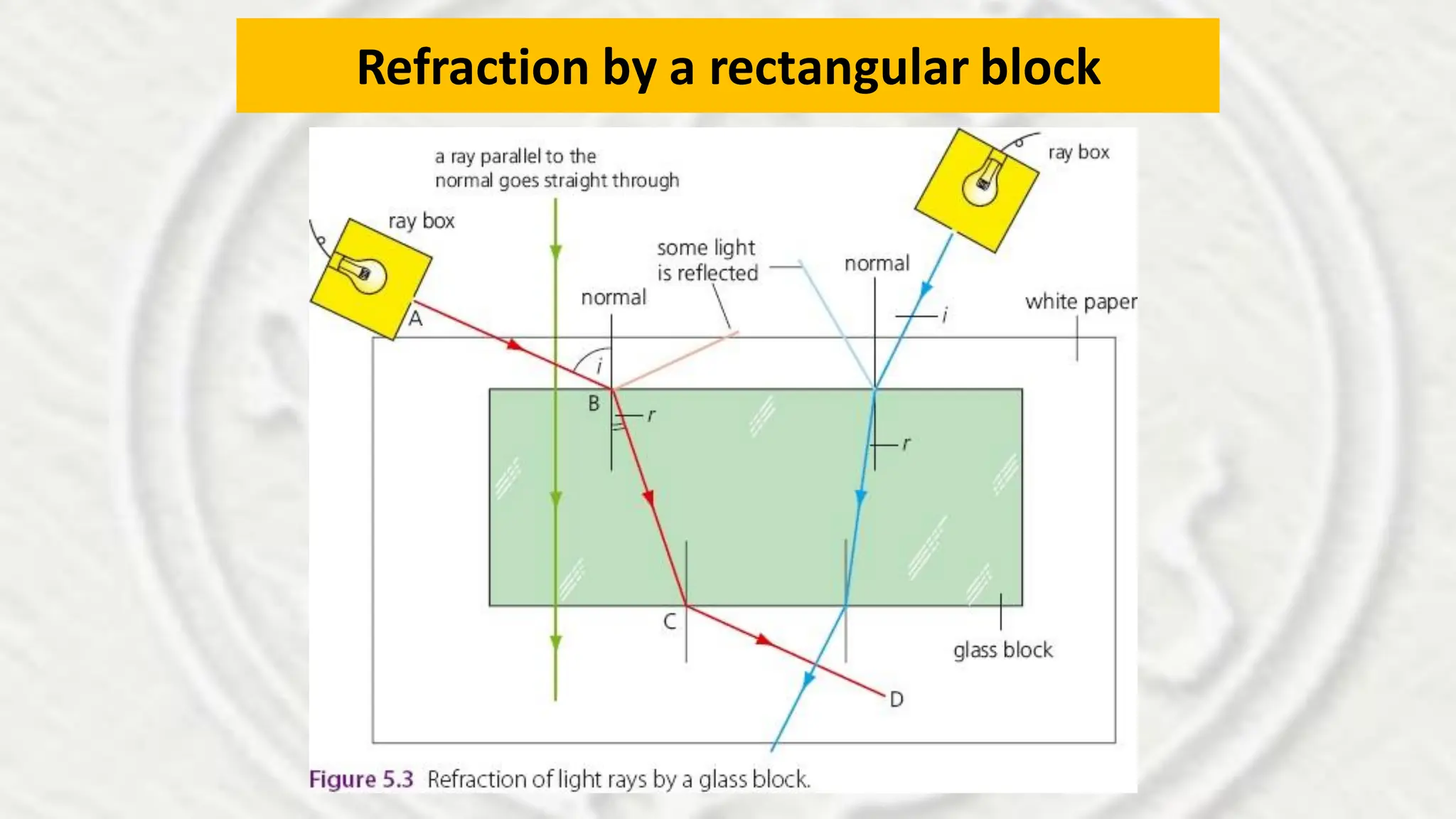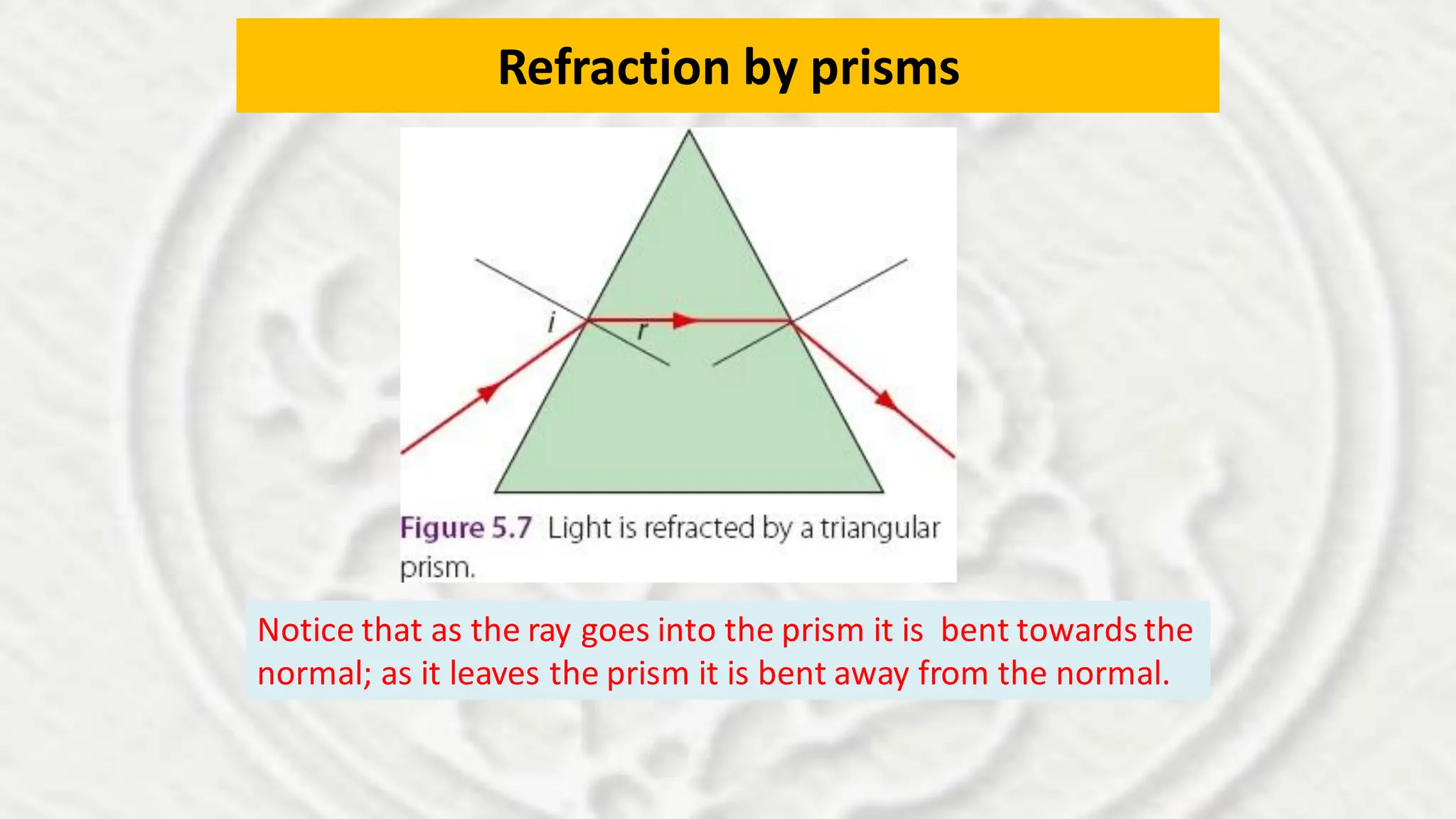The document explains refraction of light when it travels from air into transparent materials like glass or water, emphasizing that this bending of light depends on the material and the angle of incidence. It details an experiment for measuring refraction using a rectangular block and introduces the concept of refractive index, providing calculations and study questions for further understanding. Additionally, it discusses the behavior of light rays through prisms and offers guidance for improving experimental accuracy.













